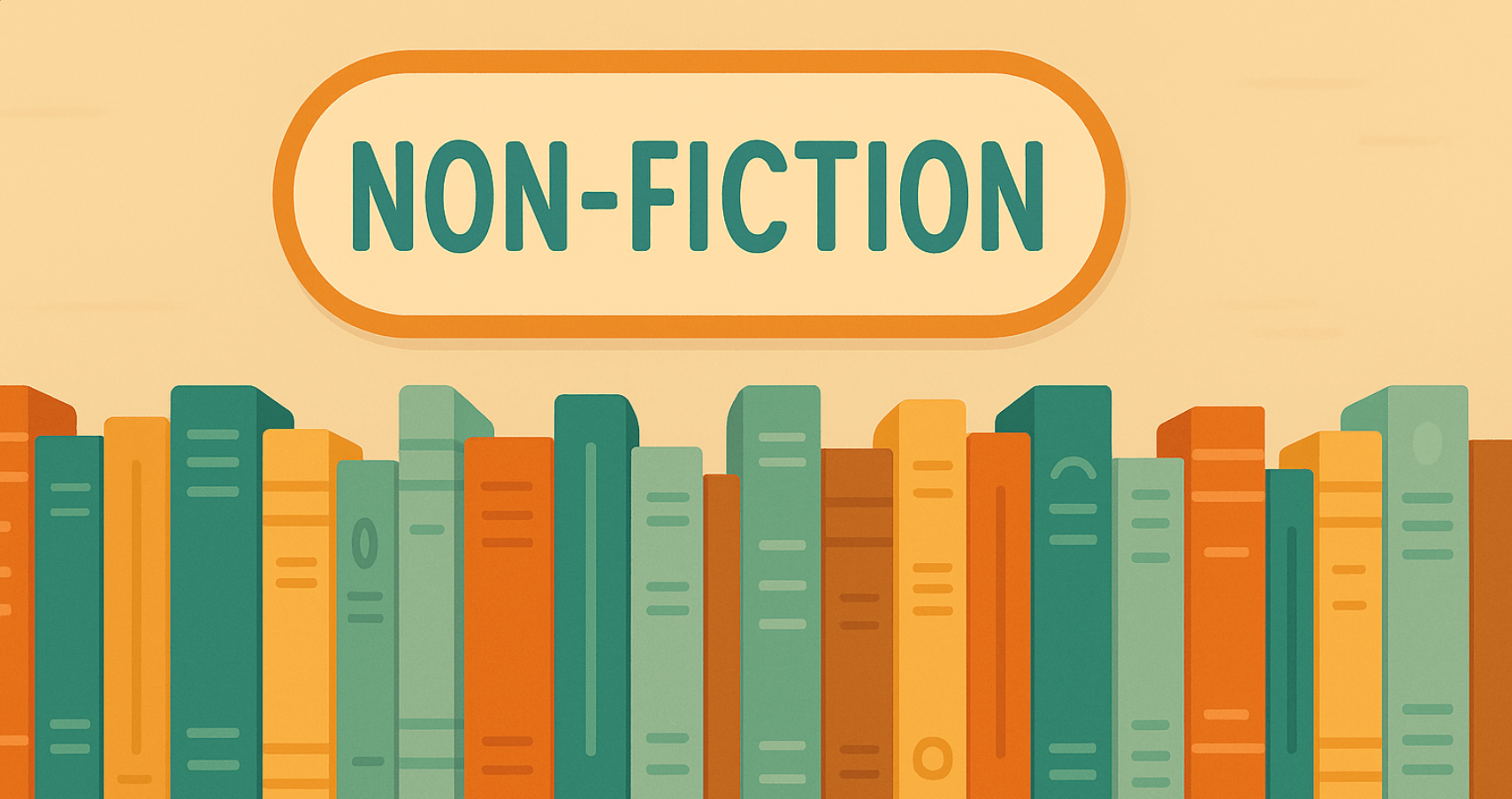Have you ever read a story so vivid you could practically smell the freshly brewed coffee, taste the buttery croissant, or feel the rain-soaked cobblestones beneath your feet? That’s the power of sensory detail—when words don’t just paint a picture, but activate all five senses, pulling readers fully into the world on the page.
Without sensory detail, even the most exciting plot can fall flat. Writing without it is like serving a cardboard sandwich—technically there, but no one’s craving more.
But here’s the thing: sensory detail isn’t about sounding fancy—it’s about creating immersive experiences. Whether you’re crafting a novel, blog post, or short story, engaging sight, sound, taste, touch, and smell can transform your writing from meh to mesmerizing.
In this article, you’ll learn what sensory detail is, why it matters, and how to use it effectively—with plenty of sensory detail examples to get you inspired. So buckle up—let’s make your writing not just seen, but felt, heard, tasted, and yes, even sniffed.
What is Sensory Detail?
Sensory detail refers to descriptions in writing that engage the five senses: sight, sound, smell, taste, and touch. These details help readers experience a scene more vividly, making the writing feel real and immersive.
Instead of simply telling the reader what’s happening, sensory detail shows them—through the warmth of sunlight on skin, the crunch of gravel underfoot, or the scent of pine after rain. It’s one of the key elements that separates flat descriptions from unforgettable, vivid writing.
The Power of Sensory Language
Sensory language is like the spice rack of writing—it turns the ordinary into the extraordinary. By tapping into your reader’s senses and emotions, you’re not just telling a story; you’re creating an immersive experience that pulls them in and refuses to let go.
Imagine this:
- Flat writing: The thunderstorm was loud.
- Sensory writing: Thunder cracked like a whip across the dark sky, rattling the windows and sending a low rumble through the floorboards.
The second version doesn’t just tell you a storm is happening—it lets you hear it, feel it, and maybe even flinch a little. That’s the power of sensory language—it transforms your words into a multi-sensory experience.
Why is this so effective? Because humans experience the world through their senses and emotions. When your writing mirrors this, it triggers emotional responses and helps readers connect to and understand your story on a personal level. For example:
- A description of fresh-baked cookies can trigger nostalgia for home.
- A vivid sound, like a screeching car tire, can build tension and make readers feel uneasy.
- The metallic tang of blood in a scene can heighten the drama and make it feel more real.
Take this sentence:
- “The coffee smelled good.”
Now let’s make it sensory: “The rich aroma of freshly brewed coffee curled through the air, warm and inviting, with hints of chocolate and roasted hazelnuts.”
With just a few tweaks, you’ve transformed a basic observation into something readers can almost smell and crave.
Sensory language is especially impactful when writing blogs, short stories, or novels because it keeps readers engaged. Whether you want sensory words to evoke calm serenity, nail-biting suspense, or mouth-watering hunger, sensory language is your go-to tool. Sprinkle it into your writing, and watch as your words go from being read to being felt.
Pro tip: Use sensory words and details strategically. Not every scene needs all five senses—it’s about choosing the ones that best convey the tone and mood you want. Done right, sensory language can make your writing so vivid and interesting, that your readers won’t just enjoy it—they’ll remember it.
Your Publishing Journey Awaits – Start NowExploring the Five Senses in Writing
To truly captivate your readers, you need to engage all five senses—sight, sound, smell, taste, and touch. Think of these senses as the colors on your writing palette. The more you mix and layer them, the more vivid and textured your story becomes. Let’s break them down with examples and tips for each:
Sight: Painting Pictures with Words
Sight is often the go-to sense to convey something in writing, and for good reason. It’s the easiest way to set the scene and give readers a visual reference. But don’t just describe what something looks like—focus on the details that bring it to life.
Example:
- Basic: The sunset was pretty.
- Sensory: Streaks of molten orange and crimson melted into the horizon, casting long shadows over the quiet beach.
Tip: Avoid generic adjectives like “beautiful” or “nice.” Instead, use specific details that help readers see the scene as clearly as if they were there.
Sound: Let Your Writing Be Heard
Sound is like the background music of your scene—it sets the mood and adds depth. Think about music and how a sudden loud bang can make a reader jump or how the gentle hum of cicadas can evoke a summer evening.
Example:
- Basic: The room was noisy.
- Sensory: The sharp clatter of forks against plates mixed with bursts of laughter, while a baby’s wail cut through the chaotic symphony.
Analogy: Think of sound as a soundtrack. If you wouldn’t want silence in a movie scene, don’t let your writing feel silent either.
Smell: Evoking Memories Through Scent
A smell can be one of the most powerful triggers of memory and emotion. A single whiff of a familiar scent can transport your reader to another time or place.
Example:
- Basic: The bakery smelled good.
- Sensory: The sweet aroma of cinnamon and freshly baked bread wrapped around her like a warm hug, stirring memories of Sunday mornings in her grandmother’s kitchen.
Pro tip: Use smell sparingly but strategically. A well-placed scent can instantly make a scene more immersive.
Taste: Making Readers’ Mouths Water
Taste isn’t just for food descriptions—it can also highlight emotional moments or create contrasts. Think about the bitterness of defeat or the sweetness of victory.
Example:
- Basic: The soup tasted bad.
- Sensory: The bitter tang of burnt onions lingered on her tongue, making her wince with every reluctant spoonful.
Analogy: Taste is like seasoning—don’t overdo it, but use it to add depth when needed.
Touch: Adding Texture to Your Writing
Touch gives your writing a tactile element that helps readers feel the world you’re describing. It’s not just about physical sensations but also about emotional ones—the warmth of a hug, the chill of fear, the ache of loss.
Example:
- Basic: The blanket was soft.
- Sensory: The blanket was as soft as freshly spun wool, its warmth cocooning her against the bitter cold outside.
Tip: Use touch to describe textures, temperatures, and even pressure to make your scenes tangible.
You don’t need to use all five senses in every sentence—think of them as a toolbox. Pick the ones that best fit the mood, tone, and purpose of descriptive words and the scene. For example, a tense moment might focus on different senses of sound and touch (the creak of a floorboard, the clammy sweat on someone’s palms), while a romantic dinner might highlight smell and taste (the aroma of roses, the velvety richness of wine).
How to Incorporate Sensory Details into Descriptive Writing
Incorporating sensory details into your writing doesn’t mean bombarding your readers with every sense in every scene. Instead, think of it as sprinkling just enough seasoning to bring out the flavor of your story. Here’s how to do it effectively:
1. Start with the Most Relevant Sense
Every other object or scene we explore has a dominant sense that naturally stands out. For example, in a bustling marketplace, sound (chatter, clanging pots) might take center stage. In a forest, it could be sight (sunlight filtering through leaves) or smell (pine and damp earth).
Example: Instead of saying, “The marketplace was busy,” try:
“The sharp cries of vendors hawking their wares mingled with the clinking of coins and the sizzle of something frying in hot oil.”
2. Layer the Senses for Depth
Once you’ve established the primary sense, add one or two more to enrich the scene. This creates a more multi-dimensional experience without overwhelming the reader.
Example: A forest scene might start with visual details—”The sunlight filtered through the dense canopy, casting dappled shadows on the forest floor.” Then, add sound—“The distant trill of a bird broke the silence.” Finally, include smell—”The air was thick with the earthy scent of moss and damp soil.”
3. Use Metaphors and Similes
Sensory descriptions become even more vivid when paired with vivid language, with creative comparisons. Metaphors and similes help readers understand what you’re describing by relating it to something they already know.
Example:
- Instead of: “The cake was sweet,” try: “The cake was as sweet as honey dripping off a comb.”
- Instead of: “The air was cold,” try: “The air was cold, biting at her cheeks like tiny needles.”
4. Show, Don’t Tell
One of the golden rules of writing, “show, don’t tell,” is especially important when using sensory details. Instead of telling readers what a character feels, use sensory language to show it.
Example:
- Telling: “He was scared.”
- Showing: “His pulse thundered in his ears as his trembling hand fumbled for the key.”
5. Practice with Simple Scenes
If sensory writing feels intimidating, start small. Pick an ordinary scene—like eating breakfast or walking in the rain—and practice describing it using as many senses as possible.
Example:
- Sight: The golden yolk oozed onto the plate as the toast crunched beneath his knife.
- Sound: The sizzle of bacon crackled in the air.
- Smell: The rich aroma of coffee wafted up, warm and inviting.
- Taste: The salty butter melted on his tongue, perfectly balancing the sweetness of the jam.
- Touch: The ceramic mug was warm in his hands, the steam brushing softly against his face.
6. Quality Over Quantity
Too many sensory details can overwhelm your reader, making the writing feel cluttered. Focus on using specific, meaningful details that enhance the scene or mood. Think of it like dressing a room—adding one bold painting makes a statement, while filling the walls with clutter just creates noise.
Quick Exercise: Rewrite This Sentence
Take this flat description: “It was a hot day.”
Now, rewrite it using sensory language with details for sight, sound, and touch. Here’s one way:
“The sun blazed in the cloudless sky, turning the asphalt into a shimmering mirage. Sweat trickled down his back as cicadas buzzed lazily in the heat.”
What Is Writing with Sensory Detail?
Writing with sensory detail means using language that activates your reader’s senses—sight, sound, smell, taste, and touch—to make your scenes feel real and alive. It’s more than describing what’s happening—it’s about showing your audience how it feels to be there.
Take this simple line: “It was a cold day.”
Now compare it to: “The icy wind bit through her coat, sending shivers racing down her spine.”
The first tells. The second immerses.
When you write with sensory detail, you move beyond the surface and invite your reader to experience the world through your character’s body. It’s not just about what the garden looks like—but what it smells like after rain, how the petals feel under fingertips, and the hum of bees in the background.
Here’s an example:
- Flat: The garden was beautiful.
- Sensory-rich: The garden burst with color—roses in fiery reds and sunny yellows swayed gently in the breeze, their sweet perfume mingling with the earthy scent of freshly turned soil. Bees buzzed lazily, and the soft crunch of gravel underfoot added to the serenity.
The difference? One tells. The other transports.
Using sensory detail strategically makes your writing more engaging, emotional, and memorable. It deepens connection, enhances atmosphere, and helps readers lose themselves in your world. Think of it like adding texture to a painting or seasoning to a dish—it’s the extra layer that turns good writing into great storytelling.
Common Mistakes to Avoid with Sensory Writing
While sensory writing can elevate your storytelling, it’s easy to fall into a few common traps. Knowing these pitfalls will help you keep your descriptive writing clear, engaging, and effective.
Overloading the Reader with Too Many Details
Too much sensory detail can overwhelm the reader and slow down the pace of your story. You don’t need to describe every leaf on a tree or every note in a song—just focus on the details that matter.
Example of Overload:
“The room smelled of roses, cinnamon, and lavender, with a faint undertone of freshly baked bread and the occasional whiff of furniture polish. The walls were painted a soft cream, though the sunlight cast golden highlights over the delicate floral wallpaper that shimmered like silk.”
Better Version:
“The room smelled faintly of roses, the floral scent mingling with the warmth of freshly baked bread. Sunlight streamed through the curtains, highlighting the delicate floral wallpaper.”
The second version is vivid but doesn’t bog down the scene with unnecessary details.
Relying Too Much on One Sense
It’s tempting to lean heavily on sight since it’s the most immediate sense, but relying solely on visuals to describe it can make your writing feel one-dimensional. Balance your descriptions by weaving in sound, smell, touch, or taste where relevant.
Example of Over-reliance on Sight:
“The garden was filled with red roses, yellow tulips, and green bushes. The sunlight reflected off the fountain in the center.”
Improved Version:
“The garden was alive with life, the sweet perfume of roses and the quiet hum of bees flitting between yellow tulips. Sunlight danced across the rippling water of the central fountain, casting tiny rainbows.”
Using Clichés
Clichés like “soft as a cloud” or “sweet as honey” can make your writing feel stale. Instead, aim for fresh, unique descriptions that surprise and engage the reader.
Example of a Cliché:
“The night was as dark as pitch.”
Better Version:
“The night pressed against the windows, heavy and impenetrable, as if the darkness itself were alive.”
Forgetting to Match the Tone
Your sensory details should align with the tone and mood of your scene. Describing something in too much detail during a fast-paced action scene can kill the momentum while skipping over details in a calm, reflective moment can make the writing feel hollow.
Example:
- In a tense scene: Focus on sharp, jarring details like the creak of a door or the metallic tang of blood.
- In a romantic scene: Highlight soft, comforting sensations like the warmth of a hand or the faint scent of jasmine.
Neglecting to Edit
Sensory writing is powerful, but it’s also easy to get carried away. After drafting, revisit your descriptions and ask yourself:
- Does this detail add value to the scene?
- Does it fit the tone and pacing?
- Is it clear and easy to imagine?
Sometimes, cutting a few unnecessary details can make your sensory writing even stronger.
Pro Tip: Read It Aloud – When editing, read your sensory descriptions out loud. This helps you identify areas where the flow feels clunky or the details feel excessive. If you stumble over a sentence, your readers probably will too. By avoiding these common mistakes, you’ll ensure that your sensory descriptive writing always stays vivid, balanced, and engaging—without overwhelming your readers. Remember, less is often more, and the right detail at the right moment can make all the difference.
Writing With Sensory Detail: Bring Your Writing to Life
Sensory writing is your secret weapon for crafting stories that readers don’t just read—they experience. By engaging all five senses thoughtfully, you can create vivid, memorable scenes that stick with your audience long after they’ve turned the last page. Remember, it’s not about using every sense in every scene—it’s about choosing the right details to make your writing immersive and impactful.
So go ahead, experiment with sensory details, practice layering them, and watch as your words and ideas transform into an experience your readers will feel, hear, see, smell, and taste. The world you create on the page is yours to make tangible—one sense at a time.
How Sensory Detail Elevates Audiobooks
Writing with sensory detail—descriptions that tap into sight, sound, touch, taste, and smell—does more than enrich the page. It also transforms the listening experience in audiobook services. When an author uses vivid sensory language, narrators have more to work with in tone, pacing, and emphasis, making the audiobook more immersive. For example, a line that describes the crisp crunch of autumn leaves underfoot instantly sparks sound and texture in the listener’s imagination. Sensory-rich writing bridges the gap between words and experience, turning an audiobook into something that feels lived rather than simply heard.
FAQ: Sensory Detail
Q: What is sensory detail?
Sensory detail is descriptive language that appeals to the five senses: sight, sound, smell, taste, and touch. It helps readers vividly experience a scene, making writing more immersive and engaging.
Q: Why is sensory detail important in writing?
Sensory detail brings your writing to life by helping readers feel like they’re part of the story. It creates emotional connection, enhances mood, and makes your scenes more memorable.
Q: Can sensory details be used in nonfiction writing?
Absolutely. Whether you’re writing memoir, essays, or content marketing, using sensory detail makes your message more relatable and engaging for readers.
Q: How do I know if I’m using too much sensory detail?
If your descriptions start to feel overwhelming or slow down the pace, you might be overdoing it. Aim for balance—just enough sensory input to paint a clear picture without crowding the narrative.
Q: What are some examples of sensory detail in writing?
Example: “The smoky aroma of grilled peaches drifted through the summer air, blending with the sticky sweetness of melting vanilla ice cream.” This taps into smell, taste, and touch all at once.
Q: Do all five senses need to be used in every scene?
No, you don’t need to include all five senses in every scene. Instead, choose the ones that best fit the mood and purpose of the moment—sometimes, one vivid detail is more powerful than five forced ones.
Q: How can I improve my use of sensory detail?
Practice by observing the world around you with each sense. Then, try rewriting simple sentences by layering in descriptive language—start small and refine for clarity and emotional impact.







